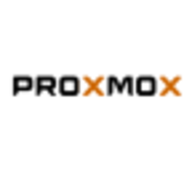

Proxmox VE and Oracle VM VirtualBox are competing in the open-source virtualization solutions market. Proxmox VE appears to have the upper hand due to its advanced enterprise features and flexibility, particularly beneficial for commercial use.
Features: Proxmox VE provides robust functionality with bare-metal installation and supports diverse hardware configurations. It combines full virtualization and container-based virtualization in one platform, allowing for seamless resource allocation and live migration. Proxmox VE also integrates well with many storage and backup solutions, making it a versatile option for businesses. Oracle VM VirtualBox is known for its ease of setup and cross-platform support. It is favored for desktop virtualization, equipped with features like bidirectional clipboard sharing and snapshot utility, making it suitable for quick development and testing.
Room for Improvement: Proxmox VE users mention the need for a simpler interface and enhanced management tools. There is also a desire for better storage IO management and additional enterprise feature integration. Oracle VM VirtualBox could improve in areas such as Windows performance, support for macOS, and network setting stability. Users have also noted the handling of USB devices and seek more commercial support options.
Ease of Deployment and Customer Service: Proxmox VE is mainly deployed on-premises and is appreciated for its flexibility in private and hybrid clouds. It primarily relies on community support, though paid support options are available. Oracle VM VirtualBox is praised for its easy deployment and wide compatibility. While users often find community support sufficient, official support is less frequently utilized.
Pricing and ROI: Proxmox VE is celebrated for its cost-effectiveness as an open-source platform, offering significant ROI by reusing existing hardware. It provides optional paid support, making it an attractive option for scalable enterprise environments. Oracle VM VirtualBox is free, appealing to budget-conscious users, though there are concerns over licensing for commercial applications. Both solutions offer free initial deployment but cater to different scales and needs.
The snapshot functionality in Oracle VM VirtualBox is effective for management purposes.
In the enterprise scenario, all software solutions, including Oracle VM VirtualBox, are expensive.
Its snapshot functionality helps with backup management.


Oracle VM VirtualBox is a robust AMD64/Intel64 and x86 next-generation virtualization solution that functions well for home use and is also powerful enough to handle the needs of a busy enterprise organization. This professional solution is open source and provides super-fast high performance in addition to many outstanding value-added features. VirtualBox functions effectively on Windows, macOS, Solaris, Linux, and more. Users can benefit from VirtualBox's dedication to continually developing the product and providing continual progressive updates and releases. The solution is supported by a trusted dedicated professional community and is backed by Oracle, which guarantees that the product is able to consistently meet and exceed quality controls and protocols at all times.
Oracle VM VirtualBox Features
Oracle VM Virtual Box provides many value-added features. Some of these features include:
Reviews from Real Users
“Oracle VM VirtualBox is easy to use and does not require much training. It uses fewer resources. Teams using new operating system releases can quickly test and implement. This would make the development of new software releases faster and easier. It also helps users to write the program, test, and support it on multiple platforms. It has a good community as it is open-source.” - Satishbabu G., Oracle ACE
“It is easy to use and does not require complex knowledge. It uses less resources, which is a requirement as it is used to onboard hardware with very little resources available.” - A PeerSpot user who is an IT Architect - AI at CGI
Proxmox VE is a complete virtualization management solution for servers. It is a powerful open-source platform and supports two virtualization technologies - KVM (Kernel-based Virtual Machine) for virtual machines and LXC for containers. Proxmox VE has a central user interface that allows you to manage not only VMs and containers, but also storage resources, network configuration, and high availability for clusters. It is enterprise-ready and is valued for its scalability and maximum flexibility, enabling you to virtualize very demanding workloads. Proxmox VE makes it possible for you to easily install, manage, and monitor hyper-converged (HCI) data centers.
Proxmox VE Key Features
The Proxmox VE platform has many powerful features, including:
pen-source software, high-available clusters, command line, fencing, a web-based management interface, flexible storage options, REST API, live/online migration, storage replication stack, software defined storage, virtualized networking, backup and restore, two-factor authentication, role-based administration, and VM templates and clones.
Proxmox VE Benefits
Some of the biggest benefits of Proxmox VE are:
Reviews From Real Users
Here is some feedback from some of our users who are currently using the solution:
A PeerSpot user who is a director at a tech services company says, “The most valuable features of Proxmox VE are the ease of containerization. Overall the solution is generic, feature-rich, and has compatibility.”
Another PeerSpot user who is a head of IT operations at a tech services company mentions that "In addition to the virtualization, the firewall and the routing functions that it provides are valuable."
Deepen D., director and CTO at TechnoInfotech, expresses that "The feature that I have found most valuable is that its storage container, LVM, and everything else work out of the box."
We monitor all Server Virtualization Software reviews to prevent fraudulent reviews and keep review quality high. We do not post reviews by company employees or direct competitors. We validate each review for authenticity via cross-reference with LinkedIn, and personal follow-up with the reviewer when necessary.